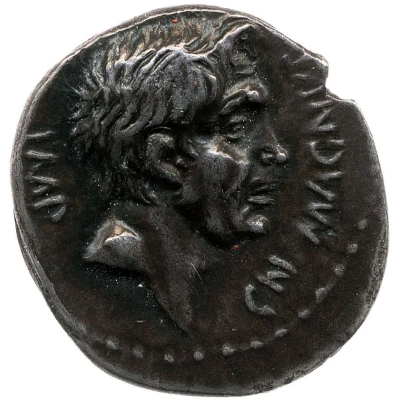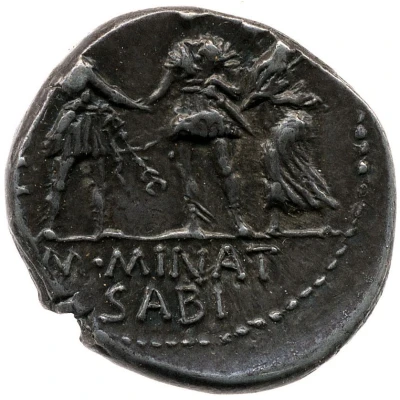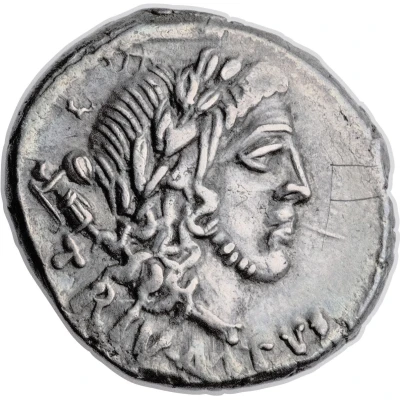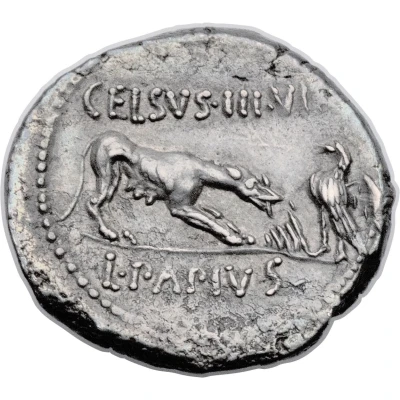
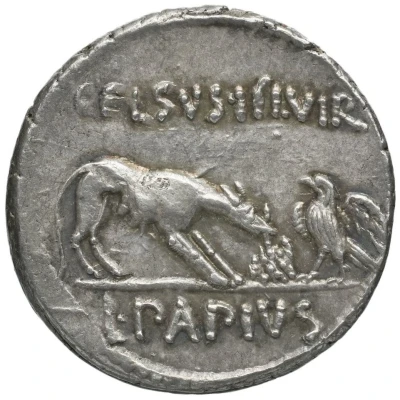

© Bibliothèque nationale de France / Gallica
Denarius Papia: Lucius Papius Celsus; L•PAPIVS CELSVS•III•VIR 45 BC
45 BC year| Silver | 4.1 g | 18 mm |
| Issuer | Rome › Roman Republic (509 BC - 27 BC) |
|---|---|
| Period | Republic (509 BC - 27 BC) |
| Type | Standard circulation coin |
| Year | 45 BC |
| Value | Denarius (1) |
| Currency | Denarius of 16 Asses (141 – 27 BC) |
| Composition | Silver |
| Weight | 4.1 g |
| Diameter | 18 mm |
| Shape | Round (irregular) |
| Technique | Hammered |
| Orientation | Variable alignment ↺ |
| Demonetized | Yes |
| Updated | 2024-10-06 |
| Numista | N#283287 |
|---|---|
| Rarity index | 93% |
Reverse
Wolf right, placing stick on fire; on right, eagle fanning flames. Border of dots.
Script: Latin
Lettering:
L•PAPIVS
CELSVS•III•VIR
Unabridged legend: Lucius Papius Celsus Triumvir
Translation: Lucius Papius Celsus, [Monetary] Triumvirate
Comment
The gens Papia was a plebeian family of consular rank, and originally belonging to Lanuvium. The Papii were tribunes of the people, who passed the laws named Papiae respecting vestals and strangers.Juno Sospita was a deity particularly sacred to the people of Lanuvium. The reverse type refers to the town's legendary founding, in which a she-wolf and eagle had kindled a fire marking the site where the town was founded upon.
Interesting fact
The Denarius coin was used as a means of payment for Roman soldiers, and it was also used to pay taxes. In fact, the Roman Empire's tax system was based on the value of the Denarius, with certain taxes being equivalent to a certain number of Denarii. This coin played a crucial role in the Roman economy and was widely used throughout the empire.
Price
| Date | Mintage | VG | F | VF | XF | AU | UNC |
|---|---|---|---|---|---|---|---|
| ND (-45) | - | - | - | - | - | - |
Values in the table are based on evaluations by sales realized on Internet platforms. They serve as an indication only for Denarius (Papia: Lucius Papius Celsus; L•PAPIVS CELSVS•III•VIR) (45 BC) coin.
